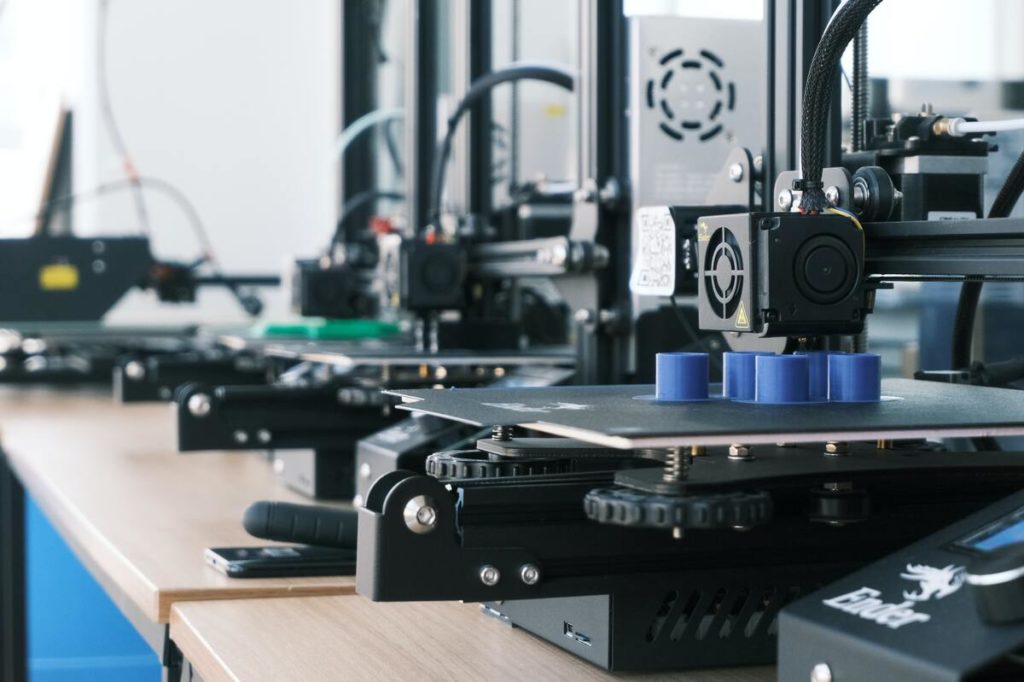3D printing has been around for some time now, but it’s only recently that the technology has become more affordable and accessible. This means that people can now use 3D printers to create new products like jewelry, toys, clothing, and even homes.
3D printers can also be used in industries like healthcare to improve patient care and efficiency. Here are the different uses of 3D printing in the healthcare industry:
1. Production of Anatomical Models
One common use for 3D printing in healthcare is the creation of anatomical models for surgeries and education. 3D printers can create incredibly accurate models of organs or other body parts, which can be used to help surgeons plan surgeries or teach medical students about the human body.
These models can be printed in different colors or materials to make them more realistic, and they can even be made to be lifelike. This technology can be especially helpful for complex surgeries or procedures that are difficult to visualize, such as brain surgery.
3D printing is also being used to create custom medical implants and prosthetics. For example, a patient with a rare bone disease might need a custom-made implant to replace a bone that has been lost. 3D printing is an ideal technology for creating these types of customized objects because it can create products with complex designs that would be difficult, if not impossible, to produce through other methods.
2. Medical and Dental Implants

The use of 3D printing in medicine is currently one of the most exciting frontiers for using innovative techniques to create new products and improve current practices. The future is looking bright in regard to the application of additive manufacturing in the field of medicine, including orthodontics.
The use of 3D printing in dentistry is limited at present, but it is likely to expand as the technology continues to develop. For example, orthodontists can now replace missing teeth with custom implants, making crowns or implants more precise and even personalized for the patient.
Further, the ability to input the shape, measurements, and preferences of a patient means that new dental implants can be produced for patients with particular jaw structures or those who wish to replace several teeth as part of an implant bridge.
3. Implantable Medical Devices
Using 3D printing, physicians can now create custom medical devices that are more effective than standard items. For example, doctors are using 3D printing to make stents, which are small mesh tubes used in surgeries or procedures to hold open blocked arteries or other passages in the body.
3D printers can create custom stents that are more effective for particular patients since the devices match the size of the patient’s arteries and provide a stronger seal.
3D printing is also being used to create prosthetic limbs, which closely match the form and appearance of real limbs. This technology can be especially valuable for children who have lost limbs because it can create prosthetic limbs that match the patient’s unique measurements. 3D printing is also better for children who are still growing.
4. Enhanced Surgical Instruments
Traditional manufacturing methods often produce surgical tools that are not as precise as they could be, which can lead to errors during surgery. 3D printing allows for the creation of surgical instruments with much more precision, which can help to ensure that surgeries go smoothly and safely.
Another benefit of using 3D printing in the surgical tool industry is that it can allow for the creation of new and innovative surgical tools. With traditional manufacturing methods, it can be difficult and expensive to create new ones. With 3D printing, manufacturers can easily create new tools that are more effective or ergonomic.
3D printing may also help to increase patient safety during surgery. Manufacturers are now creating custom surgical instruments that are more durable and resistant to contamination or breaking, which can help improve the quality of surgeries.
Lastly, 3D printing can help to reduce the cost of surgical tools in the long term, which benefits both manufacturers and patients. Traditionally manufactured surgical tools are often expensive, which means that hospitals must invest large amounts of money into their inventory before they even perform their first surgery.
5. Drug Research and Development
3D printing is revolutionizing the field of pharmaceuticals by allowing manufacturers to create extremely precise batches of drugs with customized dosages. This technology is especially valuable for patients who require very specific dosages due to allergies or other medical conditions, as well as those who need a combination of drugs.
One benefit of using 3D printing is that it can help pharmaceutical companies to produce new and innovative pills, which allows them to expand their research and development efforts. Traditionally manufactured pills have a limited design through which manufacturers must fit all the necessary components of the drug. With 3D printing, companies can create new and improved pills with customized components.
For example, pharmaceutical companies can now insert drugs into 3D printed capsules that dissolve at different rates depending on their specific chemical makeup. This allows patients to receive a dose of medicine over an extended period, which prevents instances where the patient takes too much or too little medication due to difficulty.
3D printing is quickly revolutionizing the field of healthcare. This technology has already shown itself to be valuable for creating custom medical devices, surgical tools, and drugs. In the future, 3D printing is likely to play an even more important role in healthcare as manufacturers continue to find new and innovative ways to use it.


